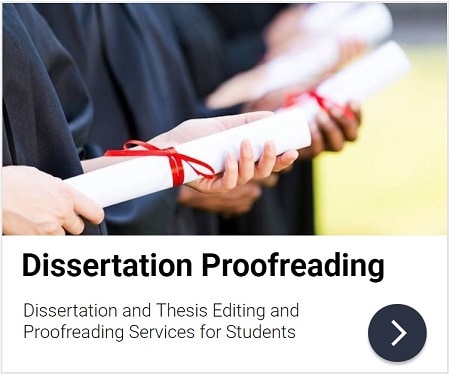7.2 The Three Main Systems of In-Text Citation
Although the details of referencing vary considerably among disciplines, style guides and department guidelines (see Lipson, 2011 for information on a wide range of citation styles), generally speaking, there are three basic methods or systems of referring to sources in the running text of an academic or scientific document: author–date and other references based on the last names of authors (such references are often used in the physical, natural and social sciences), numerical citations (frequently the referencing choice for writing in the medical and biological sciences) and citations provided in either footnotes or endnotes (a method preferred by many scholars working in the humanities). These three methods of in-text citation along with the kind of complete references each requires are discussed separately in the following three sections of this book. More general information on the basic requirements of complete bibliographical references can be found in Section 7.3.
7.2.1 Author–Date and Other References Based on Author Surnames
In-text references based on author surnames are used in a wide range of disciplines (I use author–date references in this book, for example), so you may want or be required to use in your thesis a system of referencing based on author names. The most common in-text references of this kind are author–date citations, for which the basic components are the surname of the author (or surnames of the authors if a source has more than one author) and the publication date of the source. This information is often provided entirely in parentheses (or occasionally square brackets, although they should only be used if guidelines call for them): ‘A recent investigation of the problem (Brockle, 2014) revealed this trend.’ Alternatively, the author’s name (or authors’ names) can be mentioned in the main text and the date included in parentheses – ‘Brockle’s investigation of the problem (2014) revealed this trend’ – or both the date and the author’s name (or authors’ names) can be mentioned in the main text: ‘Brockle investigated this problem in 2014.’ One method can be used in one sentence and another in the next. If parentheses are used, the parenthetical reference should be appropriately positioned in relation to the punctuation of your sentence, generally before any punctuation marks: for example, ‘According to Taylor (1990), the results were not predictable’ and ‘A more recent investigation of the problem revealed this trend (Brockle, 2014).’ There are various differences between the individual styles of author–date references. Some use a comma between the author’s name and the date when both appear in parentheses – ‘(Taylor, 1990)’ – and some do not: ‘(Taylor 1990).’ Some parenthetical references use an ampersand (&) while others use ‘and’ between the last two author names for sources with more than one author, and this tends to be maintained in the reference list, but, as a general rule, ‘and’ should be used in the main text – ‘The results of Taylor and Jones (2001) do not confirm this’ – even if an ampersand is used parenthetically: ‘(Taylor & Jones, 2001).’
When two or more references to works by the same author are provided within a single set of parentheses, the dates should be arranged chronologically and separated by commas – either ‘(Taylor, 1985, 1990, 2006, 2008)’ or, more rarely, the other way around, as in ‘(Taylor, 2008, 2006, 1990, 1985),’ but not the disorganised ‘(Taylor, 2006, 1990, 1985, 2008)’ – and the order used in the in-text citations should match that used for the same sources in the reference list. If references to different authors and works are provided within a single set of parentheses, the individual references are normally separated by semicolons and in most cases arranged alphabetically according to the authors’ surnames – ‘(Brockle, 2014; Jacobson, 2013; McNabb, 2003; McNabb & Jones, 1998; Taylor, 1985, 1990)’ – with the order matching their order in the alphabetical list of references. More rarely, such clustered references are arranged chronologically by publication date, usually from the earliest to the most recent publication – ‘(Taylor, 1985, 1990; McNabb & Jones, 1998; McNabb, 2003; Jacobson, 2013; Brockle, 2014)’ – although the order can be inverted with the most recent publication first. A different order may be required for particular situations and specific reasons – because, for instance, the source actually quoted in a sentence is cited first, though alphabetically or chronologically it would not come first – but otherwise the order chosen should be used consistently throughout a thesis.
The use of ‘et al.’ (meaning ‘and others’ and referring to additional authors of a source who have not been named) varies from style to style in parenthetical in-text citations: in Chicago and Harvard referencing, for instance, ‘et al.’ should be used after the first author’s surname if the source has four or more authors, although Harvard style also allows the use of ‘et al.’ when a source has only three authors. Chicago style uses a full stop after ‘et al.’ but no comma – ‘(Brockle et al. 2008)’ – whereas Harvard referencing uses no full stop but does use the comma: ‘(Brockle et al, 2008).’ Some guidelines will indicate that ‘et al.’ should appear in italic font, but otherwise, roman font is the norm. In the much-used APA style, ‘et al.’ is followed by a full stop and a comma, and italics are not required, but when to use ‘et al.’ is a little more complicated. If a source has three to five authors, all authors should be listed for the first citation in a thesis or chapter – ‘(Taylor, Jones, Brockle & Bennett, 2007)’ – but all subsequent in-text references should use only the first author’s name followed by ‘et al.’: ‘(Taylor et al., 2007).’ This means that special care needs to be taken to ensure that each citation appears in the correct format. For six or more authors, on the other hand, APA style uses ‘et al.’ after the first author’s name in all references to the source, including the first one (for more information on ‘et al.,’ see Section 6.3.11).
If two or more sources with the same date and by the same author (or by the same authors listed in the same order in the source itself) are cited, they need to be distinguished, and this is generally done by adding a lowercase letter to each date regardless of which author–date referencing style you are using: ‘(Olson, 2014a, 2014b).’ These same letters should appear along with the dates of the same sources in the reference list (as they do in the reference list at the end of this book for the two sources used as an example in the preceding sentence) so that the in-text references successfully match and thus lead readers to the correct sources in the list. Also necessary to allow readers to find the full bibliographical information on each source in an author–date system is the appearance of the publication date immediately after the author’s name in the corresponding reference in the list: ‘Brockle, S. (2014).’ Everything about the author and date information provided by the in-text citations within a thesis must correspond exactly with the same information in the accompanying list, so author surnames and publication dates should be carefully compared between the in-text citations and the list of references to ensure absolute accuracy and consistency.
When a source is quoted directly in author–date referencing, a page number (or page numbers) is required in the in-text citation. The use of ‘p.’ (for ‘page’) or ‘pp.’ (for ‘pages’: see Section 6.3.10 above) and the punctuation associated with citing page numbers (commas, colons, full stops, hyphens and en rules) vary according to the referencing style and/or guidelines followed, as does the spacing between the elements of page citations. In APA style, for example, ‘(Brockle, 2014, p. 98)’ is appropriate and for multiple pages ‘(Brockle, 2014, pp. 96-98)’ is correct, but in Chicago style it would be ‘(Brockle 2014, 98)’ and for multiple pages, ‘(Brockle 2014, 96–98),’ whereas Harvard style uses ‘(Brockle, 2014:p.98)’ and for multiple pages ‘(Brockle, 2014:pp.96-98).’ MLA style (often used in the humanities) differs still further: although it uses author names for in-text citations, whether parenthetically or in the running prose of the sentence, it does not use a date, but cites a page number along with the author’s name even when there is no direct quotation – ‘(Brockle 98)’ and for multiple pages ‘(Brockle 96-98)’ – and a short form of the source’s title can be added if necessary to distinguish different works by the same author. Page numbers can be elided in most styles as long as the guidelines or examples provided do not allow elision – ‘(Brockle, 2014, pp. 96–8)’ – just as they often are in full bibliographical references in the list (see Section 6.4.7 above and Section 7.3.9 below). If the source quoted does not have page numbers (as is the case with many online sources), other indicators of the precise location of a quoted passage can be provided to enable the reader to find the passage: ‘(Bennett, 2009, Results section, para. 3)’ is a good APA example, although providing paragraph numbers may only be appropriate if the paragraphs are actually numbered in the source.
When a source is quoted directly in author–date referencing, a page number (or page numbers) is required in the in-text citation. The use of ‘p.’ (for ‘page’) or ‘pp.’ (for ‘pages’: see Section 6.3.10 above) and the punctuation associated with citing page numbers (commas, colons, full stops, hyphens and en rules) vary according to the referencing style and/or guidelines followed, as does the spacing between the elements of page citations. In APA style, for example, ‘(Brockle, 2014, p. 98)’ is appropriate and for multiple pages ‘(Brockle, 2014, pp. 96-98)’ is correct, but in Chicago style it would be ‘(Brockle 2014, 98)’ and for multiple pages, ‘(Brockle 2014, 96–98),’ whereas Harvard style uses ‘(Brockle, 2014:p.98)’ and for multiple pages ‘(Brockle, 2014:pp.96-98).’ MLA style (often used in the humanities) differs still further: although it uses author names for in-text citations, whether parenthetically or in the running prose of the sentence, it does not use a date, but cites a page number along with the author’s name even when there is no direct quotation – ‘(Brockle 98)’ and for multiple pages ‘(Brockle 96-98)’ – and a short form of the source’s title can be added if necessary to distinguish different works by the same author. Page numbers can be elided in most styles as long as the guidelines or examples provided do not allow elision – ‘(Brockle, 2014, pp. 96–8)’ – just as they often are in full bibliographical references in the list (see Section 6.4.7 above and Section 7.3.9 below). If the source quoted does not have page numbers (as is the case with many online sources), other indicators of the precise location of a quoted passage can be provided to enable the reader to find the passage: ‘(Bennett, 2009, Results section, para. 3)’ is a good APA example, although providing paragraph numbers may only be appropriate if the paragraphs are actually numbered in the source.
Alphabetical order according to author surnames must be observed in author–date reference lists (as it usually is in clustered parenthetical author–date references within the chapters of a thesis), and, although many aspects of an alphabetical arrangement are straightforward (basing the order primarily on the surname of the first author for each source, for instance), others require consideration of the minute details of references. Generally speaking, works by the same author or same authors (appearing in the same order in each case) should be arranged chronologically. Either ascending order – ‘Taylor, M. (2006)’ before ‘Taylor, M. (2008)’ – or descending order – ‘Taylor, M. (2008)’ before ‘Taylor, M. (2006)’ – can be used, but the same pattern must be applied consistently to all relevant sources throughout the list, and the pattern should also match the order used when more than one of these sources is cited within a single set of parentheses in the main text of the thesis. If an author is the single author of works as well as the first author of works with more than one author, the single-authored works should be listed before the coauthored ones – ‘McNabb, G.’ before ‘McNabb, G., & Jones, N.’ – and if works with more than one author feature the same first author but different coauthors, alphabetise them according to the additional surnames: ‘Taylor, M., Jones, N., Brockle, S., & Bennett, R.’ before ‘Taylor, M., Stanley, P., Brockle, S., & Jones, N.’
When there is no individual author for a source, a corporate author or title should appear instead of an author name in the initial position within the reference in the list (and necessarily, therefore, in any in-text citations to that source), and they, too, should observe alphabetical order, excluding any opening articles: for instance, The Chicago Manual of Style should appear under ‘C,’ not ‘T.’ If an abbreviation or shortened form of a corporate author’s name or a title is used for in-text citations, it can be provided first in the reference list to allow for easy identification by readers, but it should then be followed by a full version in parentheses – ‘WHO (World Health Organization)’ – in an order opposite to that generally used when defining abbreviations in running text (see Section 6.3 above on abbreviations). If your list of references is divided into separate sections – ‘Primary Sources’ and ‘Secondary Sources,’ for instance – alphabetical order should be observed within each section, but do keep in mind that a subdivided list of this kind is not the best format for author–date references, which are more accessible to readers in a single alphabetical series . For a more detailed discussion of alphabetical order, see, for example, Section 6.25 of the Publication Manual of the APA (2010) and Section 19.3 of New Hart’s Rules (Ritter, 2005).
Why PhD Success?
To Graduate Successfully
This article is part of a book called "PhD Success" which focuses on the writing process of a phd thesis, with its aim being to provide sound practices and principles for reporting and formatting in text the methods, results and discussion of even the most innovative and unique research in ways that are clear, correct, professional and persuasive.
The assumption of the book is that the doctoral candidate reading it is both eager to write and more than capable of doing so, but nonetheless requires information and guidance on exactly what he or she should be writing and how best to approach the task. The basic components of a doctoral thesis are outlined and described, as are the elements of complete and accurate scholarly references, and detailed descriptions of writing practices are clarified through the use of numerous examples.
The basic components of a doctoral thesis are outlined and described, as are the elements of complete and accurate scholarly references, and detailed descriptions of writing practices are clarified through the use of numerous examples. PhD Success provides guidance for students familiar with English and the procedures of English universities, but it also acknowledges that many theses in the English language are now written by candidates whose first language is not English, so it carefully explains the scholarly styles, conventions and standards expected of a successful doctoral thesis in the English language.
Individual chapters of this book address reflective and critical writing early in the thesis process; working successfully with thesis supervisors and benefiting from commentary and criticism; drafting and revising effective thesis chapters and developing an academic or scientific argument; writing and formatting a thesis in clear and correct scholarly English; citing, quoting and documenting sources thoroughly and accurately; and preparing for and excelling in thesis meetings and examinations.
Completing a doctoral thesis successfully requires long and penetrating thought, intellectual rigour and creativity, original research and sound methods (whether established or innovative), precision in recording detail and a wide-ranging thoroughness, as much perseverance and mental toughness as insight and brilliance, and, no matter how many helpful writing guides are consulted, a great deal of hard work over a significant period of time. Writing a thesis can be an enjoyable as well as a challenging experience, however, and even if it is not always so, the personal and professional rewards of achieving such an enormous goal are considerable, as all doctoral candidates no doubt realise, and will last a great deal longer than any problems that may be encountered during the process.
Interested in Proofreading your PhD Thesis? Get in Touch with us
If you are interested in proofreading your PhD thesis or dissertation, please explore our expert dissertation proofreading services.


Services
PhD Dissertation Proofreading
Our PhD dissertation proofreaders specialise in improving grammar, sentence structure, citations, references, clarity, logical flow and readability.
Master’s Dissertation Proofreading
To avoid failure and its consequences, send your dissertation to our master’s dissertation proofreading service.
Scientific Dissertation Proofreading
Our scientific proofreaders specialise in correcting and perfecting the language, editorial styles and references across all science fields.
Headquarters
Dissertation-Proofreading.com
Allia Future Business Centre
The Guildhall
Market Square
Cambridge
CB2 3QJ
United Kingdom
More Expert Proofreading Services
Journal Editing
Journal article editing services
PhD Thesis Editing
PhD thesis editing services














